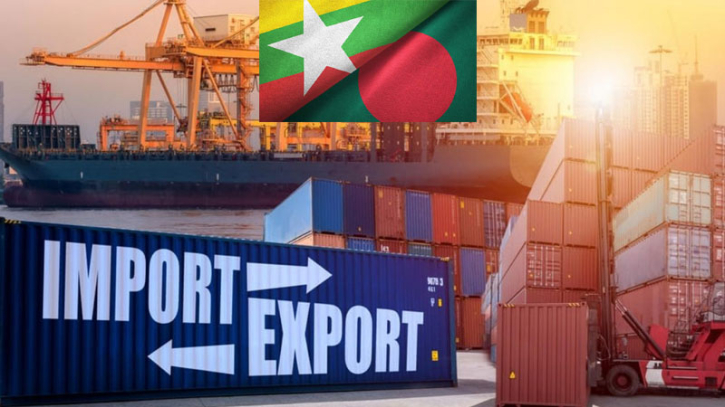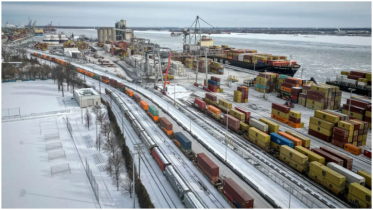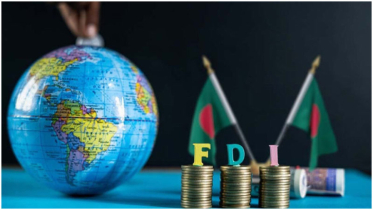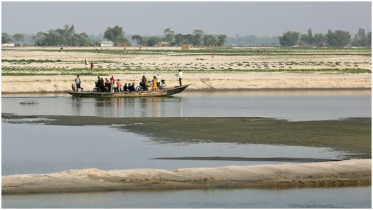Bangladesh-Myanmar trade and investment: Opportunities and way forward

With the bilateral agreement between Bangladesh and Myanmar to implement a pilot repatriation program for Rohingya refugees brokered by China in place, a group of Burmese officials were touring Rohingya refugee camps on 15 March in preparation of the expected repatriation.
The repatriation program has offered a fresh opportunity for developing warm relations between these two countries. Considering their geological proximity and shared cultural values, the economy of these two Asian countries is well suited to shore up via trade and investment.
Myanmar and Bangladesh have a lengthy land and maritime border, approximately 271 km, which, alongside their central locations in Southeast Asia and South Asia, makes it much simpler to transport products back and forth between the two countries.
Myanmar and Bangladesh have an advantageous position between the two largest global economies, India and China. This opens a new door for both countries to serve as intermediaries in the burgeoning business and investment interactions between the two heavyweights.
Notwithstanding the troubled past between the two countries, there is an increasing push to strengthen economic ties and take full advantage of the countries' proximity and complementary advantages.
By strengthening economic ties with one another, Bangladesh and Myanmar may lessen their dependence on China and India while simultaneously increasing their trade with countries in South and Southeast Asia.
Myanmar has an abundance of resources like oil and gas, while Bangladesh is widely recognised for its industrial prowess in areas like textile, apparel, leather goods and pharmaceuticals. This unlocks possibilities for export of raw materials from Myanmar and finished goods from Bangladesh.
Trade and investment between the two countries would certainly benefit from substantial infrastructure spending, especially in the fields of transportation and energy. There is an opportunity for increased cooperation in the improvement of infrastructure, which includes the construction of roads, railways, and ports.
As Myanmar is welcoming foreign investment, there is potential to accumulate capital from Bangladesh. For instance, infrastructure, tourism, timber, agriculture, marine fishing, prawn farming, manufacturing, telecommunication, education etc. are just a few of the many businesses open to investment in Myanmar.
Furthermore, there are several areas that Myanmar might benefit from Bangladesh's assistance, including microfinance, education, and women's empowerment.
Moreover, there is a robust agricultural sector in both countries; Myanmar is a major exporter of rice and pulses, while Bangladesh is a leading producer of vegetables and fish. The two countries might benefit from each other through exporting more agricultural goods.
Then again, there is a sizable portion of land in Myanmar that was not utilised for agricultural purposes, hence it is currently uncultivated. Since the government provides an open-door policy towards this sector, land leases in Myanmar are available freely to agriculture.
Over a time frame ranging from two to eight years, their lands will not be subject to taxes. These lands could be used to produce more goods.
Thus, investment from Bangladesh in Myanmar's agricultural sector might boost productivity and effectiveness, and provide opportunities for joint-venture in food processing and other value-added industries.
Indeed, there is a rising demand for Bangladeshi fertilisers in Myanmar. Manufacturers of fertilisers in the Chattogram area, not far from the border with Myanmar, may make it possible for fertilisers to reach the country.
Myanmar's Akyab and Maungdaw are located in a rich resource region abundant with bamboo, timber, and limestone. If these resources are readily available, the cement and paper industries in the Chittagong region might flourish.
The explosive growth of Bangladesh's economy is expected to increase electricity demand to the equivalent of 50,000 MW by 2041.
In contrast to Bangladesh's increasing energy needs, Myanmar is flush with oil and natural gas. Myanmar might find a new market for its natural resources by exporting its energy supplies to Bangladesh.
This would offer Bangladesh with a steady power supply at a lower cost. Oil and gas exploration, production, and transportation in Myanmar's energy sector might attract investment from Bangladesh.
Likewise, alternative energy sources like wind and solar energy have the potential to attract significant financial backing.
While the relationship between Myanmar and Bangladesh remains fragile, the value of overall commerce in 2019-20 FY reached approximately $748.36 million USD .
This has resulted in 25-year-long growth in both sides of commerce: from $4.02M in 1995 to $48.4M in 2020, Bangladesh's exports to Myanmar climbed by 10.5% FY, whereas Myanmar's exports to Bangladesh rose by 4.07% annually, from $23.6M in 1995 to $64.1M in 2020.
In 2022, international trade is predicted to rise by a phenomenal 225% and their bilateral trade will reach 250,000 tons in 2023.
A total of 34 products were exported from Bangladesh to Myanmar, with the pharmaceuticals ranking especially in-demand. Bangladesh's pharmaceutical exports are projected to grow to $27 million by 2021, from $11.77 million in 2015.
Border commerce between Myanmar and Bangladesh is a topic of endeavor. Trade and investment promotion and border infrastructure development were prioritised when the two countries decided to form a joint task force in 2018.
The Teknaf-Ledwa border crossing and Myanmar's Sittwe port are just two among numerous potential trade corridors and border crossings that were identified by task force.
In addition, transportation infrastructure between Bangladesh and Myanmar is very poor. Both Myanmar and Bangladesh are making infrastructural investments to increase connectivity.
The Greater Mekong Subregion Road Network project was recently begun in Myanmar with the goal of enhancing road connections between Myanmar and other countries in the region.
Again, a motorway is being built as part of the project between the Sittwe port and the Myanmar-India border, which could further increase transportation between Myanmar and Bangladesh.
Consequently, Bangladesh has also begun construction of the Dhaka-Chittagong Expressway and the Padma Bridge rail link, Matarbari deep sea port; which will connect the capital to the country's southwestern region.
Under part of the proposed Trans Asian Railway Network, the Dohazari-Cox's Bazar line should be extended to China-Southeast Asia through Bangladesh and Myanmar. This would be tremendously favorable across the entire regional connectivity.
Both Bangladesh and Myanmar have taken attempts to modernise their trade laws and customs operations to boost trade and investments. In order to attract foreign investment, Myanmar set up a Special Economic Zone near its border with Bangladesh.
Meanwhile, Bangladesh has declared its intention to create an economic zone close to its border with Myanmar, which might serve to further stimulate trade and investment between two countries.
However, until Myanmar and Bangladesh sign a Free Trade Agreement through removing all tariff and para tariff barriers, as well as settle their disagreements, their trade and investment potentialities will remain narrow.
The two countries should indeed reach an agreement on investment, tourism, and currency exchange apparatus. Consequently, to facilitate product transport between Bangladesh and Myanmar, it is necessary to set up and implement a coastal shipping agreement between two countries.
Source: The Business Standard
.png)




